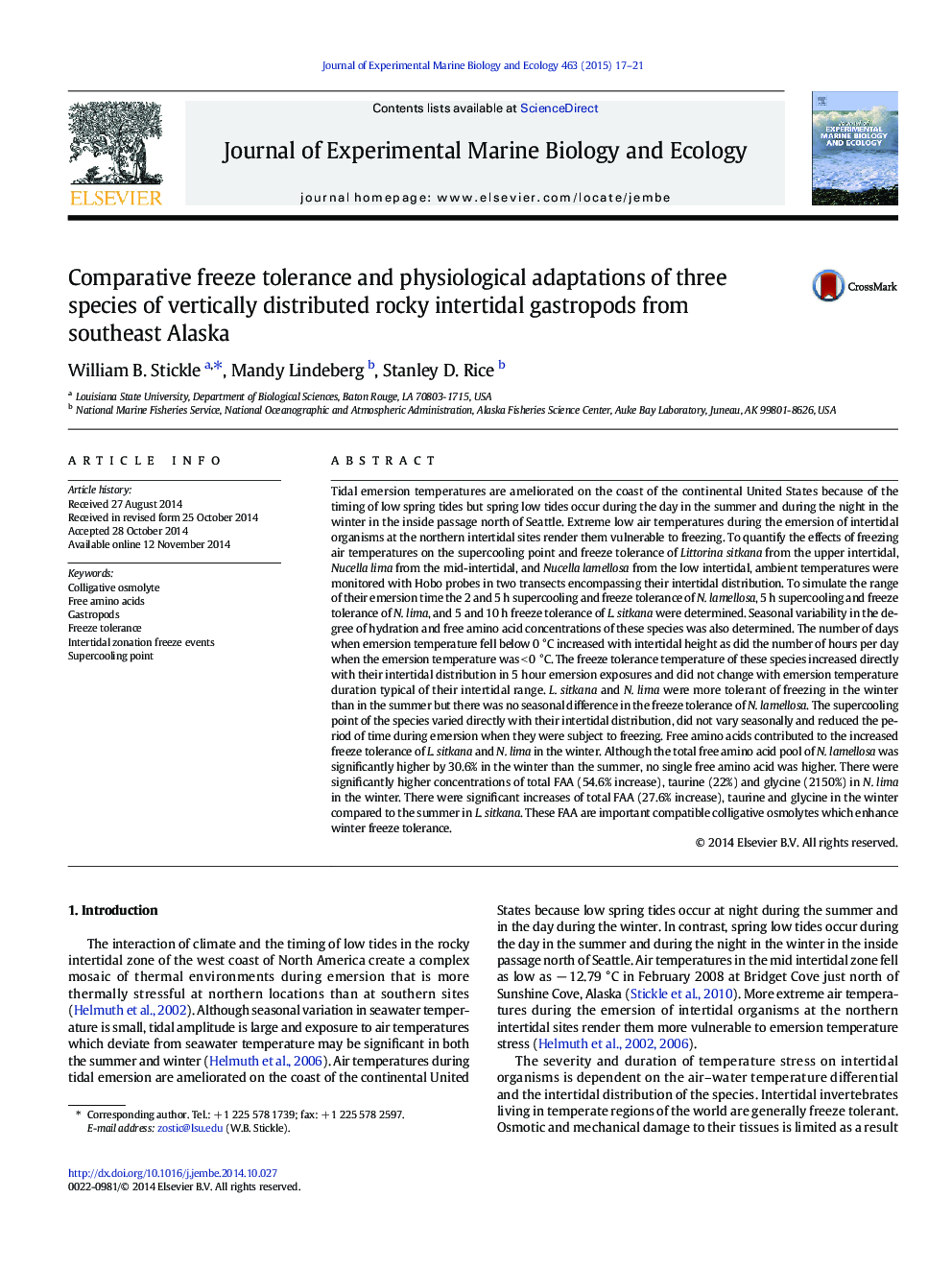| کد مقاله | کد نشریه | سال انتشار | مقاله انگلیسی | نسخه تمام متن |
|---|---|---|---|---|
| 4395482 | 1618412 | 2015 | 5 صفحه PDF | دانلود رایگان |
• Ambient temperatures monitored in intertidal zone
• Emersion temperatures time and increased with intertidal height.
• Freeze adaptations of L. sitkana (high-IT), N. lima (mid-IT), N. lamellosa (low-IT)
• Freeze tolerance increased with intertidal height of species and in the winter.
• Taurine and glycine were elevated in winter in L. sitkana and N. lima.
Tidal emersion temperatures are ameliorated on the coast of the continental United States because of the timing of low spring tides but spring low tides occur during the day in the summer and during the night in the winter in the inside passage north of Seattle. Extreme low air temperatures during the emersion of intertidal organisms at the northern intertidal sites render them vulnerable to freezing. To quantify the effects of freezing air temperatures on the supercooling point and freeze tolerance of Littorina sitkana from the upper intertidal, Nucella lima from the mid-intertidal, and Nucella lamellosa from the low intertidal, ambient temperatures were monitored with Hobo probes in two transects encompassing their intertidal distribution. To simulate the range of their emersion time the 2 and 5 h supercooling and freeze tolerance of N. lamellosa, 5 h supercooling and freeze tolerance of N. lima, and 5 and 10 h freeze tolerance of L. sitkana were determined. Seasonal variability in the degree of hydration and free amino acid concentrations of these species was also determined. The number of days when emersion temperature fell below 0 °C increased with intertidal height as did the number of hours per day when the emersion temperature was < 0 °C. The freeze tolerance temperature of these species increased directly with their intertidal distribution in 5 hour emersion exposures and did not change with emersion temperature duration typical of their intertidal range. L. sitkana and N. lima were more tolerant of freezing in the winter than in the summer but there was no seasonal difference in the freeze tolerance of N. lamellosa. The supercooling point of the species varied directly with their intertidal distribution, did not vary seasonally and reduced the period of time during emersion when they were subject to freezing. Free amino acids contributed to the increased freeze tolerance of L. sitkana and N. lima in the winter. Although the total free amino acid pool of N. lamellosa was significantly higher by 30.6% in the winter than the summer, no single free amino acid was higher. There were significantly higher concentrations of total FAA (54.6% increase), taurine (22%) and glycine (2150%) in N. lima in the winter. There were significant increases of total FAA (27.6% increase), taurine and glycine in the winter compared to the summer in L. sitkana. These FAA are important compatible colligative osmolytes which enhance winter freeze tolerance.
Journal: Journal of Experimental Marine Biology and Ecology - Volume 463, February 2015, Pages 17–21
